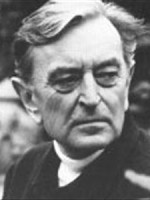Peter Taylor is a Editor British born on 28 february 1922 at Portsmouth (United-kingdom)

Peter Taylor (1922 – 1997) was an English film editor with more than 30 film credits. Perhaps his best remembered contribution is the editing of the 1957 film The Bridge on the River Kwai.
In his obituary for Taylor, Tony Sloman gives several examples to illustrate Taylor's editing. He writes:By 1963 the British New Wave had beached, and Peter Taylor edited the superb This Sporting Life, the debut feature of the cine-literate director Lindsay Anderson. It is a remarkable study of working-class angst, with a cutting style like no other British feature before it, an ever-underrated achievement by Taylor, as Anderson received all the credit, as directors do. This Sporting Life remains, with The Bridge on the River Kwai, the supreme testament to Peter Taylor's craft and talent.
Taylor won an Academy Award for Film Editing for The Bridge on the River Kwai (1957), which was placed as the 36th best American film ever made in the 2007 American Film Institute listing. David Lean directed the film, about whom Ken Dancyger has noted that, "Lean may have made few films, but his influence has far exceeded those numbers. The role of editing in his films may help explain that influence." Lean himself had begun his own career as a film editor. Sloman comments on the relationship of Lean, Taylor, and the film's editing: ...film industry wags may assert that the editing Oscar came with the letter of engagement on a David Lean film - and in later years it is certainly true that Lean, a former editor, would himself dictate the precise nature of the cutting - none the less, Peter Taylor had served a long apprenticeship with Lean. His Oscar for Kwai was an honest vindication of his talent, for Taylor physically edited the film into shape, working closely with Lean only on the final cut.
Taylor moved to Rome, Italy around 1966. He cut three films with Italian director Franco Zeffirelli; both La Traviata (1983) and Otello (1986) were nominated for the BAFTA Award for Best Foreign Film.
Devenu monteur sur un premier film sorti en 1950, il retrouve à ce poste le réalisateur David Lean pour trois autres films, dont Vacances à Venise (1955, avec Katharine Hepburn et Rossano Brazzi) et Le Pont de la rivière Kwaï (1957, avec William Holden et Alec Guinness). Suivent entre autres La Marque de Guy Green (1961, avec Maria Schell et Stuart Whitman) et Le Prix d'un homme de Lindsay Anderson (1963, avec Richard Harris et Rachel Roberts).
Installé en Italie vers 1966, il contribue ainsi à trois réalisations de Franco Zeffirelli, dont La Mégère apprivoisée (1967, avec Elizabeth Taylor et Richard Burton) et le film d'opéra La traviata (1983, avec Teresa Stratas et Plácido Domingo). Citons encore Nina, dernier film de Vincente Minnelli (1976, avec Liza Minnelli et Ingrid Bergman).
Le dernier de ses trente-trois films (britanniques, italiens ou en coproduction) comme monteur est Devenir Colette de Danny Huston (1991, avec Klaus Maria Brandauer et Mathilda May). Toujours pour le grand écran, s'ajoute un documentaire de Hugh Hudson sorti en 1980, consacré au pilote automobile Juan Manuel Fangio.
Pour la télévision (britannique principalement), Peter Taylor est monteur sur dix séries à partir de 1953, dont le feuilleton Emmerdale (quarante-six épisodes, 1973) et The Darling Buds of May (sa dernière série, deux épisodes, 1991).
Le Pont de la rivière Kwaï précité lui permet de gagner en 1958 un Oscar du meilleur montage.
Source : Wikidata
Peter Taylor

- Infos
- Photos
- Best films
- Family
- Characters
- Awards
Birth name Peter John Brough Taylor
Nationality United-kingdom
Birth 28 february 1922 at Portsmouth (United-kingdom)
Death 17 december 1997 (at 75 years) at Rome (Italie)
Nationality United-kingdom
Birth 28 february 1922 at Portsmouth (United-kingdom)
Death 17 december 1997 (at 75 years) at Rome (Italie)
Peter Taylor (1922 – 1997) was an English film editor with more than 30 film credits. Perhaps his best remembered contribution is the editing of the 1957 film The Bridge on the River Kwai.
In his obituary for Taylor, Tony Sloman gives several examples to illustrate Taylor's editing. He writes:By 1963 the British New Wave had beached, and Peter Taylor edited the superb This Sporting Life, the debut feature of the cine-literate director Lindsay Anderson. It is a remarkable study of working-class angst, with a cutting style like no other British feature before it, an ever-underrated achievement by Taylor, as Anderson received all the credit, as directors do. This Sporting Life remains, with The Bridge on the River Kwai, the supreme testament to Peter Taylor's craft and talent.
Taylor won an Academy Award for Film Editing for The Bridge on the River Kwai (1957), which was placed as the 36th best American film ever made in the 2007 American Film Institute listing. David Lean directed the film, about whom Ken Dancyger has noted that, "Lean may have made few films, but his influence has far exceeded those numbers. The role of editing in his films may help explain that influence." Lean himself had begun his own career as a film editor. Sloman comments on the relationship of Lean, Taylor, and the film's editing: ...film industry wags may assert that the editing Oscar came with the letter of engagement on a David Lean film - and in later years it is certainly true that Lean, a former editor, would himself dictate the precise nature of the cutting - none the less, Peter Taylor had served a long apprenticeship with Lean. His Oscar for Kwai was an honest vindication of his talent, for Taylor physically edited the film into shape, working closely with Lean only on the final cut.
Taylor moved to Rome, Italy around 1966. He cut three films with Italian director Franco Zeffirelli; both La Traviata (1983) and Otello (1986) were nominated for the BAFTA Award for Best Foreign Film.
Biography
Peter Taylor débute comme assistant monteur, notamment sur Hamlet de Laurence Olivier (1948) et Le Mur du son de David Lean (1952).Devenu monteur sur un premier film sorti en 1950, il retrouve à ce poste le réalisateur David Lean pour trois autres films, dont Vacances à Venise (1955, avec Katharine Hepburn et Rossano Brazzi) et Le Pont de la rivière Kwaï (1957, avec William Holden et Alec Guinness). Suivent entre autres La Marque de Guy Green (1961, avec Maria Schell et Stuart Whitman) et Le Prix d'un homme de Lindsay Anderson (1963, avec Richard Harris et Rachel Roberts).
Installé en Italie vers 1966, il contribue ainsi à trois réalisations de Franco Zeffirelli, dont La Mégère apprivoisée (1967, avec Elizabeth Taylor et Richard Burton) et le film d'opéra La traviata (1983, avec Teresa Stratas et Plácido Domingo). Citons encore Nina, dernier film de Vincente Minnelli (1976, avec Liza Minnelli et Ingrid Bergman).
Le dernier de ses trente-trois films (britanniques, italiens ou en coproduction) comme monteur est Devenir Colette de Danny Huston (1991, avec Klaus Maria Brandauer et Mathilda May). Toujours pour le grand écran, s'ajoute un documentaire de Hugh Hudson sorti en 1980, consacré au pilote automobile Juan Manuel Fangio.
Pour la télévision (britannique principalement), Peter Taylor est monteur sur dix séries à partir de 1953, dont le feuilleton Emmerdale (quarante-six épisodes, 1973) et The Darling Buds of May (sa dernière série, deux épisodes, 1991).
Le Pont de la rivière Kwaï précité lui permet de gagner en 1958 un Oscar du meilleur montage.
Best films
Usually with
Filmography of Peter Taylor (30 films)
Editor
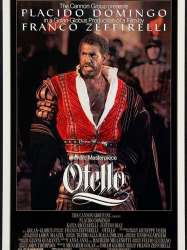
Otello (1986)
, 1h58Directed by Franco Zeffirelli
Origin Italie
Genres Drama, Musical
Themes Seafaring films, Films about music and musicians, Théâtre, Transport films, Musical films, Films based on plays, Films based on works by William Shakespeare, Films based on operas
Actors Justino Díaz, Antonio Pierfederici, Urbano Barberini, Remo Remotti
Roles Editor
Rating68%





With only a few exceptions, the film follows the same plot as the opera. Iago plots and brings about Otello's downfall by convincing him that his wife Desdemona is engaged in an affair with the young lieutenant Cassio, provoking Otello to murder her in a blind rage. However, in a major change from the opera, Otello kills Iago at the end by throwing a spear at him, while in the stage version he only wounds him with his sword.

Inchon (1982)
, 1h45Directed by Terence Young
Origin USA
Genres Drama, War, Historical
Themes Politique, Political films
Actors Laurence Olivier, Jacqueline Bisset, Ben Gazzara, Toshiro Mifune, Richard Roundtree, David Janssen
Roles Editor
Rating29%





The film depicts the Battle of Inchon during the Korean War, which took place September 15–19, 1950 and is considered the turning point of the war. The protagonist of the film is General Douglas MacArthur (Laurence Olivier), who led the United States surprise amphibious landing at Incheon in 1950. A subplot in the film involves an American couple who encounter difficulties in their relationship because of the ongoing war.
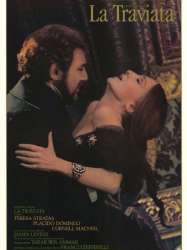
La Traviata (1982)
, 1h45Directed by Franco Zeffirelli
Origin Italie
Genres Drama, Musical
Themes Films about music and musicians, Films about sexuality, Erotic films, Films about prostitution, Musical films, Films based on operas, Erotic thriller films, Fictional prostitutes
Actors Allan James Monk, Pina Cei, James Levine
Roles Editor
Rating75%





The film opens in the Paris home of courtesan Violetta Valery, where sheets cover the furniture in dimly lit rooms. Creditors, appraisers, and movers are removing much of the artwork and ornate furnishings. One of them curiously wanders through the rooms, until he comes upon Violetta, bedridden and looking pallid and weak, and he stares at her with undisguised awe. She is startled to see him and follows him to see what he is doing. As she gazes down the long hallway, her delirious mind drifts back to a happier time, and via flashback we are transported to a lavish party she is hosting to celebrate her recovery from an illness. One of her guests, Count Gastone, has brought with him his friend, the young nobleman Alfredo Germont, who has long adored Violetta from afar. She becomes dizzy and retires to her bedroom to recover; he follows her and declares his love. At first Violetta rejects him, telling him love means nothing to her, but she is touched by his concern and offers him a camellia, telling him to return it when it has wilted. He promises to see her the next day.

The Ninth Configuration (1980)
, 1h58Directed by William Peter Blatty
Origin USA
Genres Drama, Thriller, Fantastic, Comedy, Horror comedy, Horror
Themes Medical-themed films, Psychologie, Films about religion, Films about psychiatry, Comedy horror films, Films set in psychiatric hospitals
Actors Stacy Keach, Scott Wilson, Jason Miller, Ed Flanders, Neville Brand, George DiCenzo
Roles Supervising Editor
Rating67%





In the 1970s, a large castle is used by the US Government as an insane asylum for military personnel. Among the many patients there is a former astronaut, Billy Cutshaw (Scott Wilson), who aborted a moon launch and was dragged screaming from the capsule, suffering from an apparent mental breakdown.
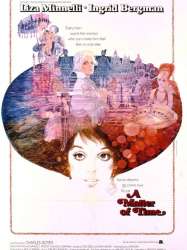
A Matter of Time (1976)
, 1h37Directed by Vincente Minnelli
Origin Italie
Genres Drama, Fantasy
Actors Ingrid Bergman, Liza Minnelli, Charles Boyer, Isabella Rossellini, Tina Aumont, Fernando Rey
Roles Editor
Rating51%





The film opens at a mid-1950s press conference, where scenes are shown for an upcoming film starring Nina (Liza Minnelli), a popular screen celebrity. While on her way to the conference, Nina looks at herself in an ornate mirror, which triggers a flashback to her arrival in Rome, when she was 19 years old. Her cousin, Valentina (Tina Aumont), has arranged for her to work as a chambermaid in a dilapidated hotel.

The Tempter (1974)
, 1h45Directed by Damiano Damiani
Origin Italie
Genres Drama
Actors Glenda Jackson, Claudio Cassinelli, Arnoldo Foà, Lisa Harrow, Adolfo Celi, Duilio Del Prete
Rating61%





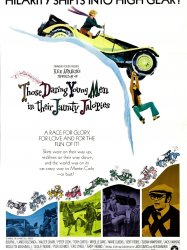
Monte Carlo or Bust! (1969)
, 2hDirected by Ken Annakin
Genres Comedy, Action, Adventure
Themes Sports films, Transport films, Films about automobiles, Auto racing films, Road movies
Actors Tony Curtis, André Bourvil, Lando Buzzanca, Walter Chiari, Peter Cook, Terry-Thomas
Rating60%





An international car rally in the 1920s attracts competitors from all over the world to compete in the Monte Carlo Rally. The arch rivals from England, Italy, France and Germany find that their greatest competition comes from the United States in the form of Chester Schofield (Tony Curtis), who had won half of an automobile factory in a poker game with the late father of baronet Sir Cuthbert Ware-Armitage (Terry-Thomas). Ware-Armitage has entered the race in a winner-take-all to exact revenge and win back the lost half of the company.
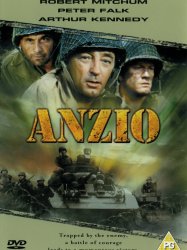
Anzio (1968)
, 1h57Directed by Duilio Coletti, Edward Dmytryk
Origin USA
Genres Drama, War, Action, Historical
Themes Political films
Actors Robert Mitchum, Robert Ryan, Peter Falk, John Arthur Kennedy, Earl Holliman, Mark Damon
Roles Editor
Rating59%





After meeting a general, war correspondent Dick Ennis (Robert Mitchum) is assigned to accompany US Army Rangers for the upcoming attempt to outflank the tough enemy defenses. The amphibious landing is unopposed, but the bumbling American general, Jack Lesley (Arthur Kennedy) is too cautious, preferring to fortify his beachhead before advancing inland. Ennis and a Ranger drive in a jeep through the countryside, discovering there are few Germans between the beachhead and Rome, but his information is ignored. As a result, the German commander, Kesselring (Wolfgang Preiss), has time to gather his forces and launch an effective counterattack.

The Taming of the Shrew (1967)
, 2h2Directed by Franco Zeffirelli
Origin USA
Genres Drama, Comedy, Comedy-drama, Romantic comedy, Romance
Themes Théâtre, Films based on plays, Films based on works by William Shakespeare
Actors Elizabeth Taylor, Richard Burton, Natasha Pyne, Michael Hordern, Alfred Lynch, Cyril Cusack
Roles Editor
Rating70%





À Padoue, le signore Baptista désespère de trouver un mari qui puisse résister au caractère colérique de sa fille aînée Catharina. Car d'autre part il se refuse à chercher un mari pour sa fille cadette Bianca avant d'avoir trouvé un mari pour la première des deux sœurs. L'un des soupirants de Bianca, Hortensio, reçoit bientôt la visite de Petruccio, un marchand ruiné originaire de Vérone qui lui confie qu'il est venu à Padoue chercher richesse et femme. Hortensio lui met alors dans la tête de conquérir le cœur de Catharina, ce qui lui donnerait l'occasion de mettre la main sur une dot de 20 000 couronnes d'or.
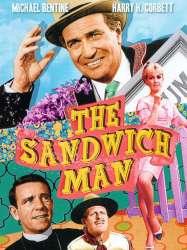
The Sandwich Man (1966)
, 1h35Directed by Robert Hartford-Davis
Origin United-kingdom
Genres Comedy
Actors Michael Bentine, Dora Bryan, Harry H. Corbett, Bernard Cribbins, Diana Dors, Ian Hendry
Roles Editor
Rating55%






Judith (1966)
, 1h49Directed by Daniel Mann
Origin USA
Genres Drama, War
Themes Films set in Africa, Political films
Actors Sophia Loren, Peter Finch, Jack Hawkins, Frank Wolff, André Morell, Peter Burton
Roles Editor
Rating56%





In Palestine shortly before the end of the British mandate, the Haganah has learnt that a former German tank commander, General Gustav Schiller (Hans Verner), is teaching the Arabs battle tactics, but they are unable to locate him. Then they learn of the existence of his Jewish former wife, Judith Auerbach Schiller (Sophia Loren), and arrange for her to be smuggled into Palestine via the port of Haifa. She is placed in the care of Aaron Stein (Peter Finch), a Haganah commander, at a kibbutz.
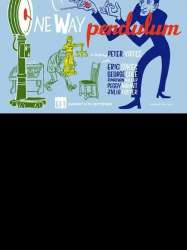
One Way Pendulum (1965)
, 1h30Directed by Peter Yates
Origin United-kingdom
Genres Comedy
Actors Eric Sykes, George Cole, Julia Foster, Peggy Mount, Alison Leggatt, Mona Washbourne
Roles Editor
Rating58%





Study of absurdity in a suburban family: father rebuilds the Old Bailey in the living room, and the son teaches weighing machines to sing in the bathroom.

Strictly for the Birds (1964)
, 1h3Directed by Vernon Sewell
Origin United-kingdom
Genres Comedy
Actors Tony Tanner, Joan Sims, Graham Stark, Carol Cleveland, Christine Hargreaves, Eric Dodson
Rating48%






This Sporting Life (1963)
, 2h14Directed by Lindsay Anderson
Origin United-kingdom
Genres Drama, Romance
Themes Sports films, Rugby, Rugby à XIII
Actors Richard Harris, Rachel Roberts, Alan Badel, William Hartnell, Colin Blakely, Arthur Lowe
Roles Editor
Rating74%





Set in Wakefield, the film concerns a bitter young Yorkshire coal miner, Frank Machin (Harris). Following a nightclub altercation, in which he takes on the captain of the local rugby league club and punches a couple of the others, he is recruited by the team's manager, who sees profit in his aggressive streak.
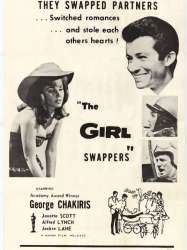
Two and Two Make Six (1962)
, 1h29Directed by Freddie Francis
Origin United-kingdom
Genres Comedy, Romantic comedy
Actors George Chakiris, Janette Scott, Alfred Lynch, Jocelyn Lane, Athene Seyler, Bernard Braden
Roles Editor
Rating61%





 Connection
Connection



